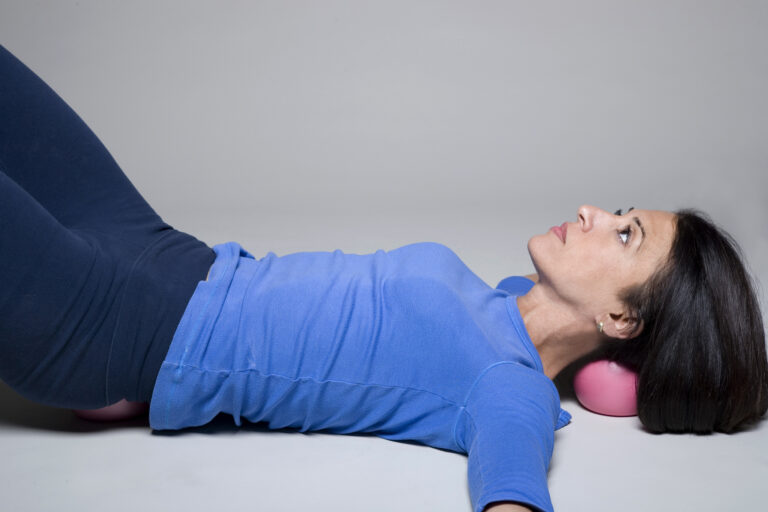Door Number Three
People know about exercise, and they know about physical therapy. But they don’t know about door number three.
The Miracle Ball Method is door number three.
Exercise—whether it’s dance, martial arts, going to the gym, or yoga—is still, even with the best of intentions, something we ask our body to do. When we go to physical therapy or other treatment modalities—acupuncture, chiropractic, somatic practices like the Alexander Technique or Feldenkrais—there’s often a learning curve. We are trying to guide the body somewhere.
The Miracle Ball Method is about something else entirely. It’s about noticing where your body already is.
While exercise and therapy have great value, I would argue—with strong conviction and decades of experience—that the reason many people struggle to sustain relief from injury or maintain alignment after a chiropractic adjustment is because they do not understand door number three.
But what if we turned that idea around?
Intuitive vs. Intellectual
Let’s talk about the difference between intuitive and intellectual movement.
We all have a certain sense of some parts of our body—but not others. We move in ways we don’t even notice. That’s because we couldn’t possibly be conscious of every movement we make all day long. Neurologically, it’s just not possible. Movement is far too complex.
Think of a concert pianist.
Once he has practiced the techniques and strategies, he sits down and plays a complex piece. He’s not thinking about whether each finger is in the “perfect” position. It becomes intuitive. That is the miracle of what the human body and brain can do.
But in real life, most of us are moving with years—decades—of habits that have adapted to stress, trauma, injury, and misinformation. Over time, we lose our actual sense of the body.
What You Don’t Feel, You Can’t Move
Many of us spend a lifetime trying to figure out how to hold our head “correctly,” how to keep the pelvis stable, or how to engage our core. But when we’re constantly holding ourselves in a position, we’re no longer free to move.
Instead of trying to hold everything in place, what if we simply noticed what we’re already doing?
How are you breathing right now?
What muscles are involved in your breathing?
Where does the breath go—or not go—in your body?
You might say, “Oh, I do that in yoga or when I meditate.” But again, that’s not door number three. That’s you doing something. That’s asking your body to breathe in a certain way.
What I want you to do is notice how you already breathe.
Do you feel it?
Are the muscles around your torso tight or restricted?
Is your breath limited—like mine was?
Begin to notice:
- What parts of your body you feel when you move.
- What parts of your body don’t move—even when you try to make them.
Getting a true sensory experience of your body isn’t always pleasurable. Sometimes we’d rather not feel. We just want to fix it.
But you cannot fix what you don’t feel.
All of those therapies and exercises would be so much more effective if you actually felt your own physical body.
So, What Does the Ball Do?
The Miracle Ball is a neurological tool. It connects body to brain—or maybe more accurately, reconnects them.
It helps you sense what’s missing. It lets your brain reorganize the way you move.
It’s so simple, it’s often overlooked.
We tend to want big diagnoses. Big solutions. Things that will make a massive impact. But what your body can do—once you reconnect to what is, not what you wish it to be—is profound.
The body doesn’t move in an imaginary world. It moves in your world, right now.
Are other treatments effective? Yes, to a degree. But I can’t tell you how many times I’ve heard,
“My knee is better, but now my shoulder hurts.”
There are missing pieces.
The Miracle Ball Method may seem too simple. People think, “This can’t possibly work.”
But when they actually do it, they start to notice:
- “Why do I move differently?”
- “How did that pain go away?”
That’s how the word “miracle” became part of the name.
Because what happens can feel almost beyond explanation.
That is the human body—incredibly responsive, when given the chance.
But you cannot think your body into healing.
You have to feel it.
Follow us on social media!



